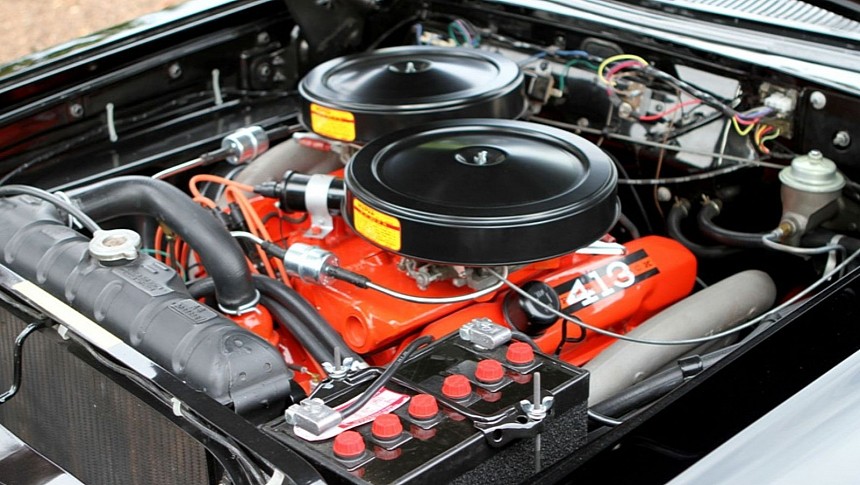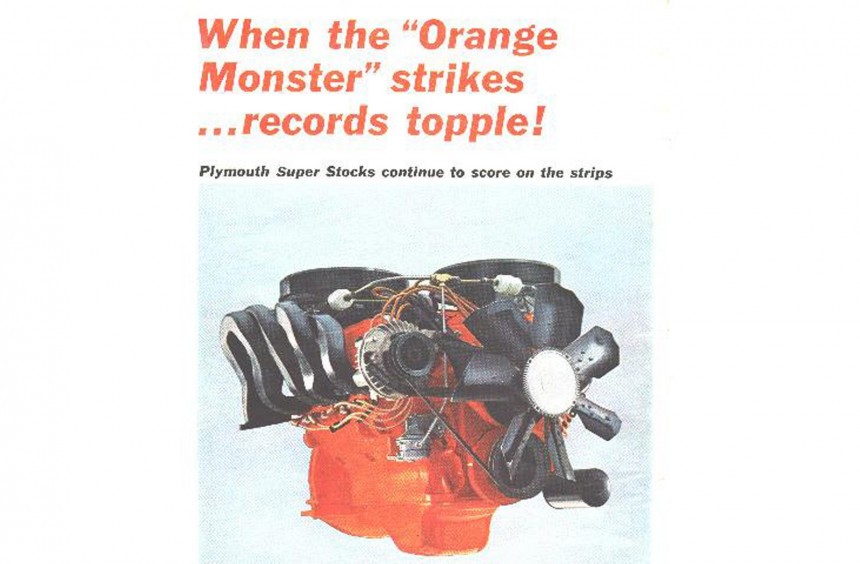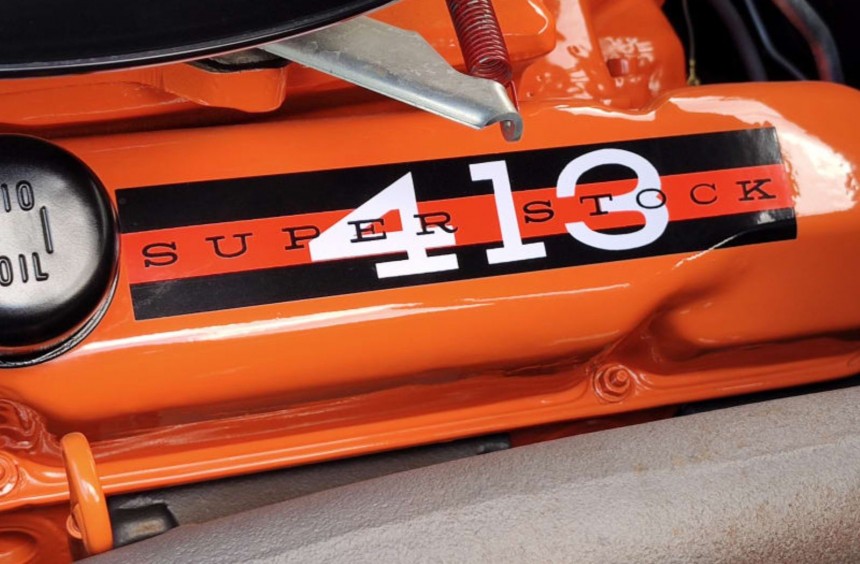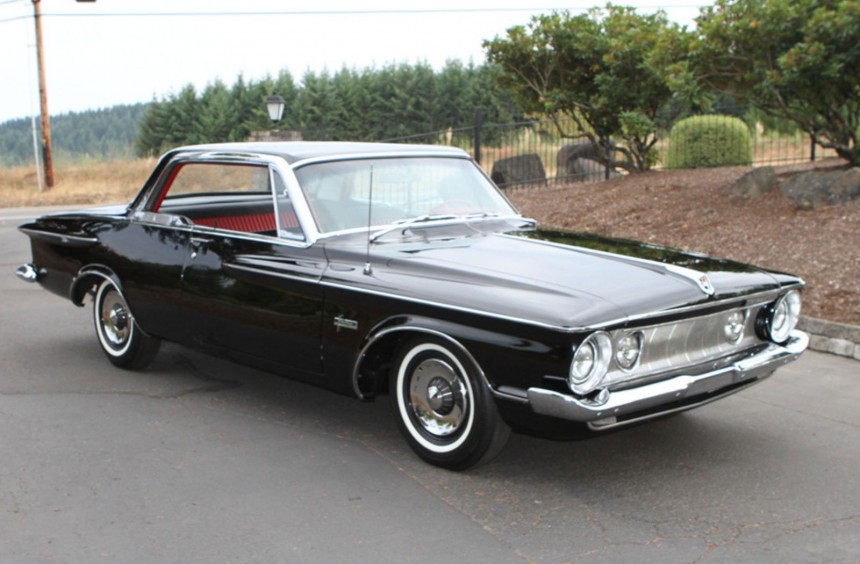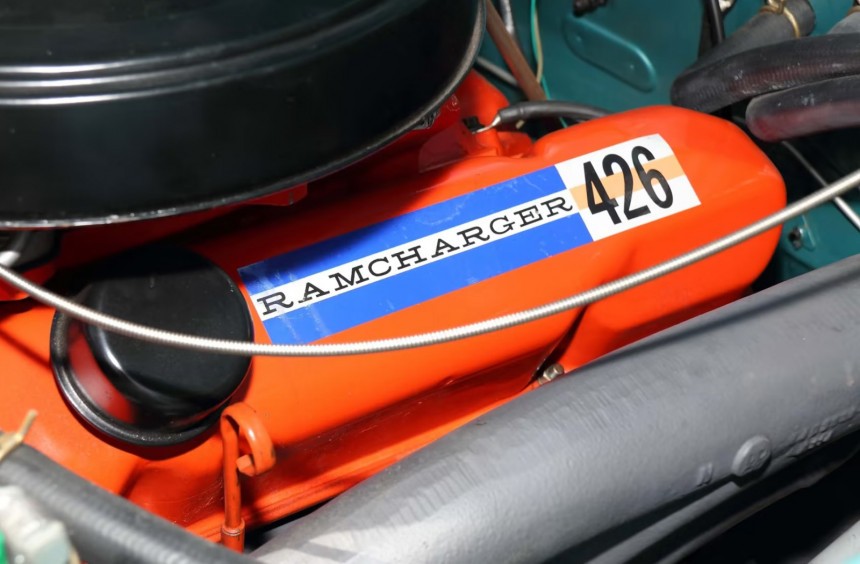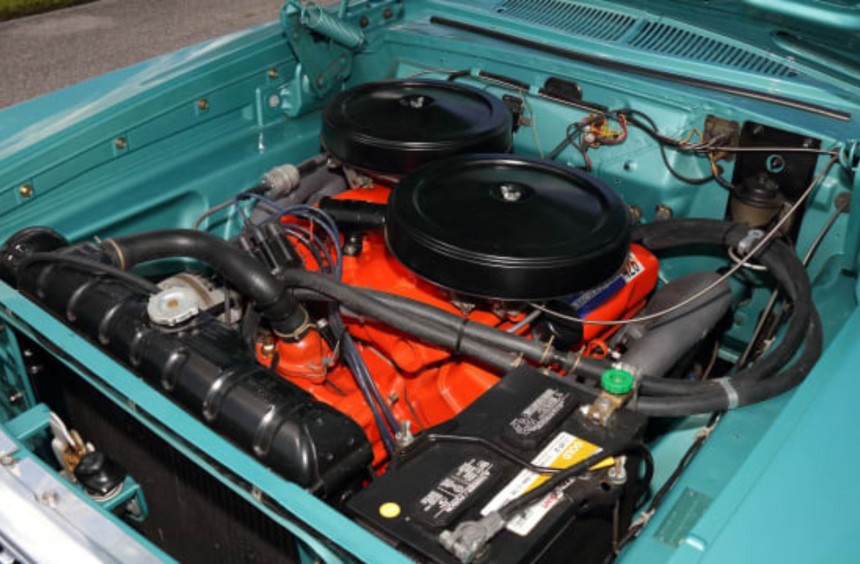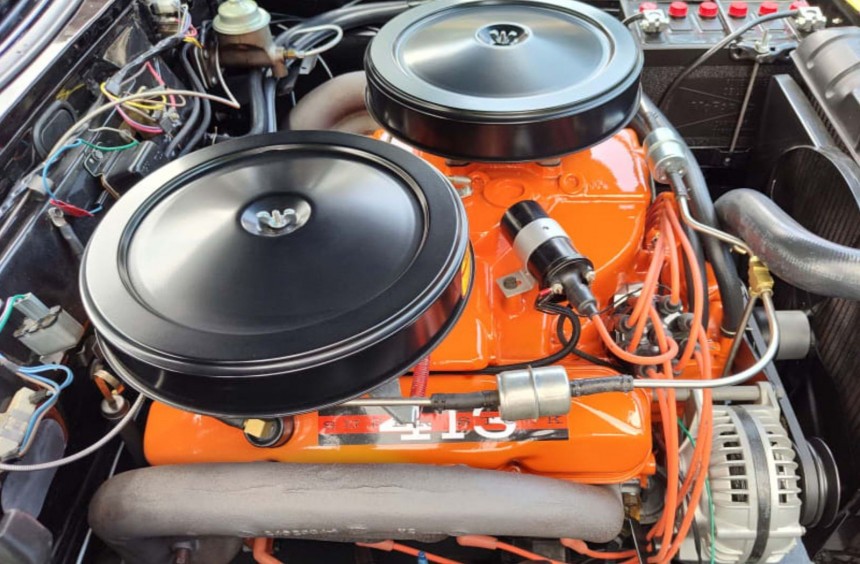Today, if you ask younger enthusiasts about the origins of the muscle car, most will point to the 1964 Pontiac GTO. However, two years before that, Dodges and Plymouths equipped with the Max Wedge V8 were breaking records on drag strips nationwide.
If we follow the strict definition of a muscle car, which is a two-door, American-made intermediate equipped with a large-displacement V8, the first muscle cars ever built were the 1948 Oldsmobile 88 and the 1957 AMC Rambler Rebel - both intermediate-sized models available with large V8s borrowed from their full-size siblings.
But neither of these was able to break the 300 hp mark (the 88 couldn't even reach 200 hp). Therefore, these models are currently considered proto-muscle cars rather than direct descendants of the high-powered intermediates of the 1960s and 1970s.
The first thoroughbred muscle cars (or super cars, as they were initially called) started arriving during the first part of the 1960s, and the most capable of them were powered by the forgotten Max Wedge big block.
Throughout the second part of the 1950s, the go-to performance engine for the Chrysler Corporation's brands was one of multiple higher-displacement versions of the first-generation HEMI.
Though these potent units could go well over 300 hp, none were fitted inside the engine bays of intermediates.
The first-gen HEMI was discontinued in 1958 when it was replaced by the wedge-head B Block. A year later, Chrysler started developing a new performance V8 based on the wedge-head's big block sibling, the RB.
When the engine dubbed Maximum Performance Wedge was ready for mass production in 1962, factory stock drag racing had become immensely popular.
Every American carmaker aimed to win titles in factory stock classes, so Chrysler made the Max Wedge available in lighter intermediates intended for the strip.
With a bespoke wedge-shaped combustion chamber that inspired its name, the initial Max Wedge displaced 413 ci (6.77 liters) - just like the largest RB available on the market back then.
However, compared to the standard RB, the performance version received stronger internals, custom heads with larger ports and valves, dual valve springs, a special high-lift cam, a new intake manifold with 15-inch (381 mm) runners, and two 650-cfm Carter AFB carbs fitted diagonally on top of the manifold.
Available only in Dodge and Plymouth B-body intermediates (except station wagons) and called either Ram-Charger 413 (Dodge) or Super Stock 413 (Plymouth), the Max Wedge was rated at 410 hp when delivered with an 11.0:1 compression ratio or 420 hp (with a 13.5:1 ratio).
The engine was instantly dominant on the strip, with a Plymouth Savoy nicknamed "Melrose Missile" becoming the first factory stock car to break into eleven-second territory, running the quarter mile in 11.93 seconds in the summer of '62.
Unlike future factory-built drag weapons, the Orange Monster-powered intermediates, such as the Fury Super Stock, were technically street-legal.
But while it was virtually unbeatable on the strip, the Max Wedge was hard to live with on a daily basis.
According to the original sales brochures, the long-duration camshaft conceived for high speeds caused a rough idle operation and subpar low-speed response. Moreover, it was a legitimate gas-guzzler that gobbled up sensibly more fuel than a standard RB.
In 1963, Chrysler engineers increased the Max Wedge's stroke from 3.18 in. (80.77 mm) to 3.75 in.(95.25 mm), leading to a new displacement of 426 ci (6.98 liters).
This version, dubbed Stage II, was also available in two configurations, each with a different compression ratio.
The first one, available via the 08 sales code, came with an 11.0:1 ratio and delivered 415 hp.
The second configuration (sales code 09), rated at 425 hp, came with a 13.5:1 ratio courtesy of stronger internals, a hotter 320-degree cam, and a unique free-flowing exhaust system.
The Max Wedge engines returned for 1964, and although mildly improved in some regards, the output ratings did not change.
With the arrival of the street HEMI 426, the Orange Monster rode into the sunset after the 1964 model year ended.
When it hit the streets, the 426 HEMI was rated at 425 hp (though dyno tests yielded slightly more). Far more adept for daily driving duties and also capable of ruling the strip, it quickly made Mopar enthusiasts forget about the Max Wedge.
Apart from its questionable "streetatability," one of the biggest reasons why the Max Wedge and the cars it powered are virtually forgotten today is the lack of advertisement they received.
Unlike the 426 HEMI or the 1964 GTO's Tri-Power 389, the Max Wedge option didn't benefit from a marketing campaign.
Instead, the option was presented by dealers only to customers who were known for competing in NHRA-sanctioned drag races.
Consequently, only 512 Max Wedge-powered cars were sold during the 1962 model year, and not many more throughout 1963 and 1964.
Despite low production figures, the Max Wedge-powered Dodges and Plymouths are not that collectible today.
Few have survived, and even fewer can be found in pristine shape, but their value rarely exceeds $100,000, which is a very low figure compared to equally rare 426 HEMI-powered Mopars in the same condition.
Although overshadowed by the Elephant HEMI, the Max Wedge is a forgotten Mopar legend that deserves more respect. In many ways, it was the first high-performance muscle car V8, and in its heyday, the cars that featured it were nearly unbeatable on the strip.
If you want to see one of the rare Max Wedge-powered muscle cars take to the streets, we recommend watching the following Jay Leno's Garage episode.
But neither of these was able to break the 300 hp mark (the 88 couldn't even reach 200 hp). Therefore, these models are currently considered proto-muscle cars rather than direct descendants of the high-powered intermediates of the 1960s and 1970s.
The first thoroughbred muscle cars (or super cars, as they were initially called) started arriving during the first part of the 1960s, and the most capable of them were powered by the forgotten Max Wedge big block.
Born to rule the strip
Though these potent units could go well over 300 hp, none were fitted inside the engine bays of intermediates.
The first-gen HEMI was discontinued in 1958 when it was replaced by the wedge-head B Block. A year later, Chrysler started developing a new performance V8 based on the wedge-head's big block sibling, the RB.
When the engine dubbed Maximum Performance Wedge was ready for mass production in 1962, factory stock drag racing had become immensely popular.
Every American carmaker aimed to win titles in factory stock classes, so Chrysler made the Max Wedge available in lighter intermediates intended for the strip.
The 1962 Max Wedge 413
However, compared to the standard RB, the performance version received stronger internals, custom heads with larger ports and valves, dual valve springs, a special high-lift cam, a new intake manifold with 15-inch (381 mm) runners, and two 650-cfm Carter AFB carbs fitted diagonally on top of the manifold.
Available only in Dodge and Plymouth B-body intermediates (except station wagons) and called either Ram-Charger 413 (Dodge) or Super Stock 413 (Plymouth), the Max Wedge was rated at 410 hp when delivered with an 11.0:1 compression ratio or 420 hp (with a 13.5:1 ratio).
The engine was instantly dominant on the strip, with a Plymouth Savoy nicknamed "Melrose Missile" becoming the first factory stock car to break into eleven-second territory, running the quarter mile in 11.93 seconds in the summer of '62.
Technically street-legal but definitely not a daily-driver engine
But while it was virtually unbeatable on the strip, the Max Wedge was hard to live with on a daily basis.
According to the original sales brochures, the long-duration camshaft conceived for high speeds caused a rough idle operation and subpar low-speed response. Moreover, it was a legitimate gas-guzzler that gobbled up sensibly more fuel than a standard RB.
Becoming even bigger and more powerful
This version, dubbed Stage II, was also available in two configurations, each with a different compression ratio.
The first one, available via the 08 sales code, came with an 11.0:1 ratio and delivered 415 hp.
The second configuration (sales code 09), rated at 425 hp, came with a 13.5:1 ratio courtesy of stronger internals, a hotter 320-degree cam, and a unique free-flowing exhaust system.
The Max Wedge engines returned for 1964, and although mildly improved in some regards, the output ratings did not change.
With the arrival of the street HEMI 426, the Orange Monster rode into the sunset after the 1964 model year ended.
Almost as powerful but never as popular as the 426 HEMI
Apart from its questionable "streetatability," one of the biggest reasons why the Max Wedge and the cars it powered are virtually forgotten today is the lack of advertisement they received.
Unlike the 426 HEMI or the 1964 GTO's Tri-Power 389, the Max Wedge option didn't benefit from a marketing campaign.
Instead, the option was presented by dealers only to customers who were known for competing in NHRA-sanctioned drag races.
Consequently, only 512 Max Wedge-powered cars were sold during the 1962 model year, and not many more throughout 1963 and 1964.
The Max Wedge today
Few have survived, and even fewer can be found in pristine shape, but their value rarely exceeds $100,000, which is a very low figure compared to equally rare 426 HEMI-powered Mopars in the same condition.
Although overshadowed by the Elephant HEMI, the Max Wedge is a forgotten Mopar legend that deserves more respect. In many ways, it was the first high-performance muscle car V8, and in its heyday, the cars that featured it were nearly unbeatable on the strip.
If you want to see one of the rare Max Wedge-powered muscle cars take to the streets, we recommend watching the following Jay Leno's Garage episode.
